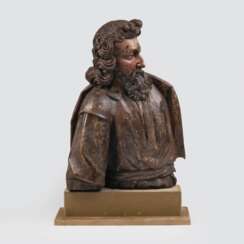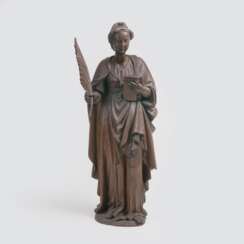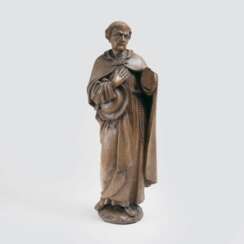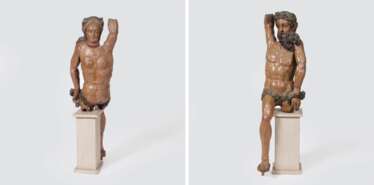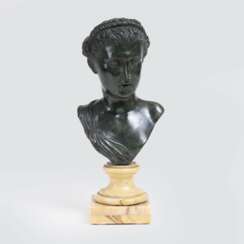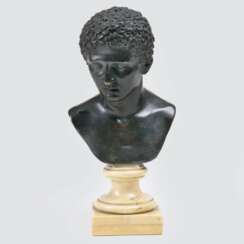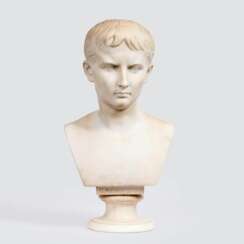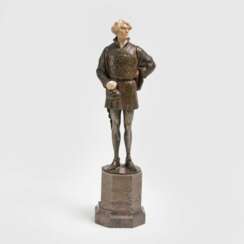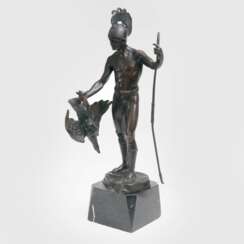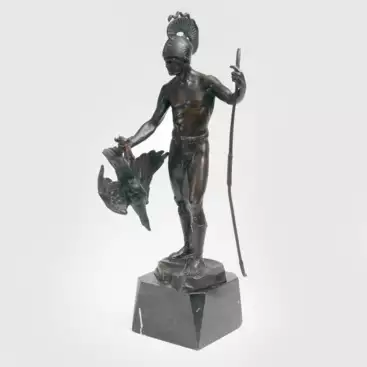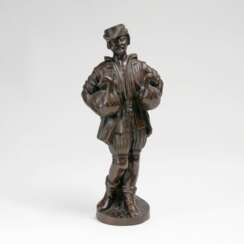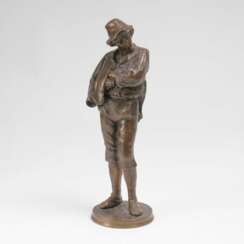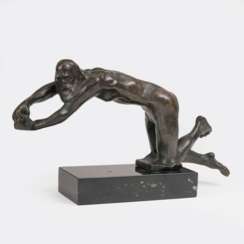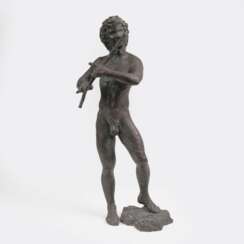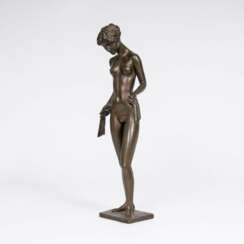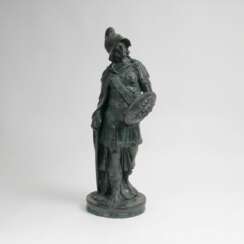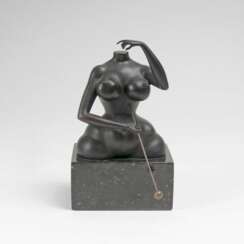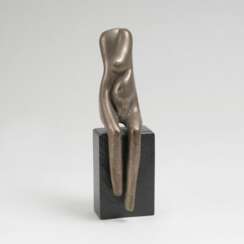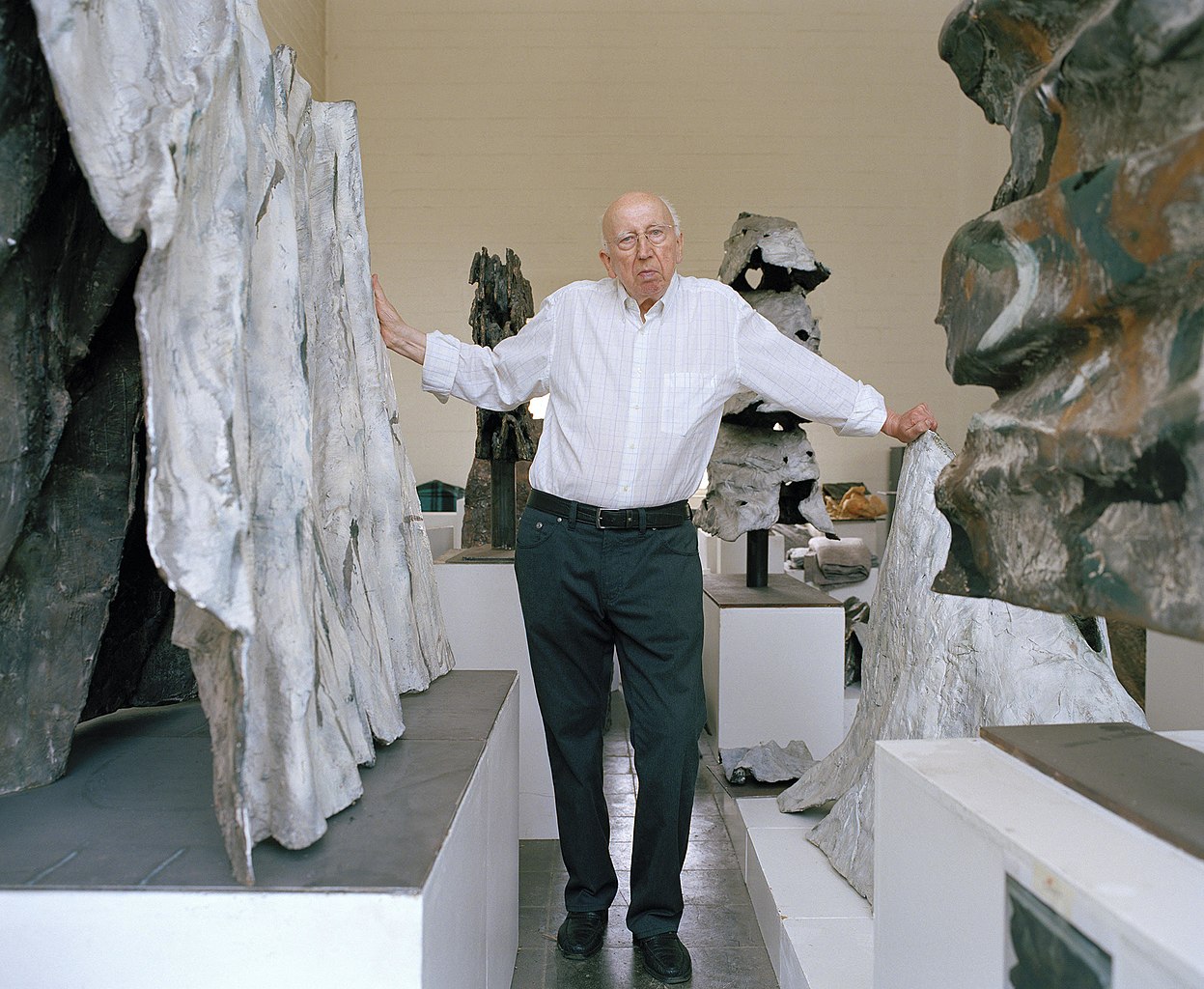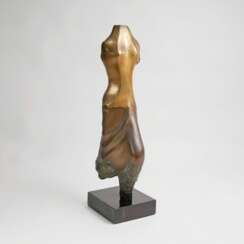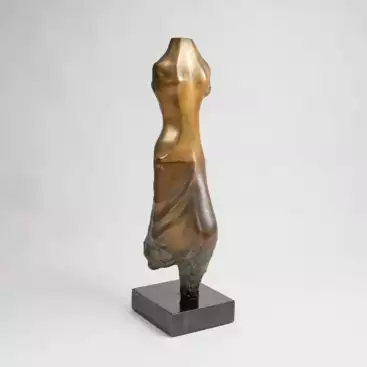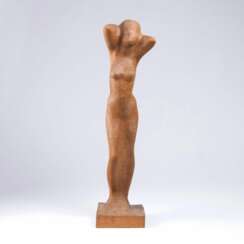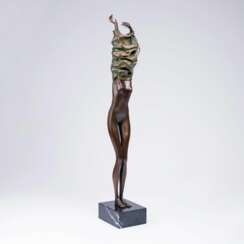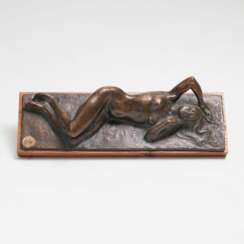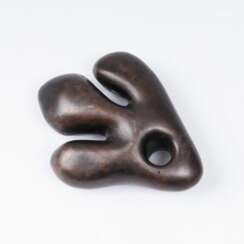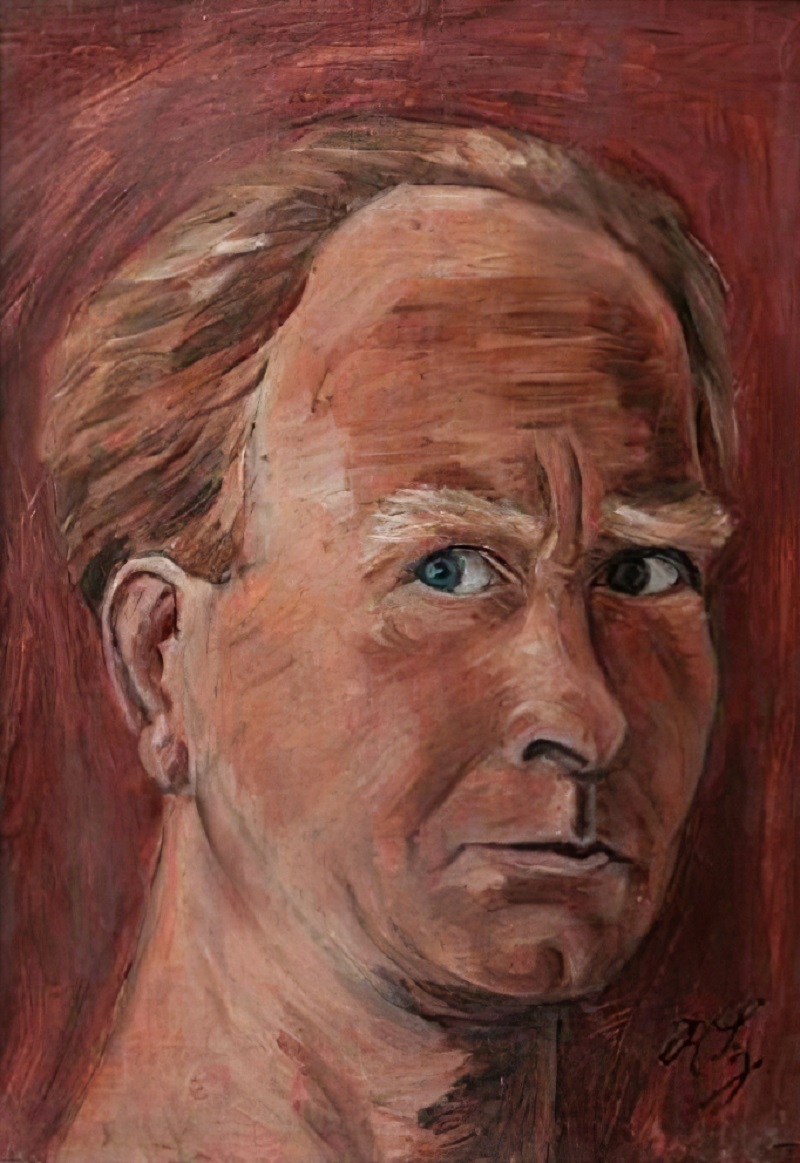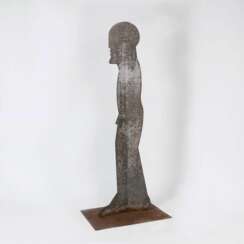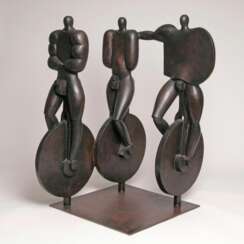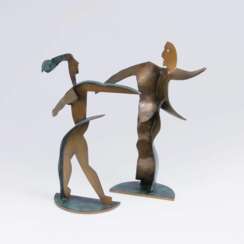
Applied arts — Art auction
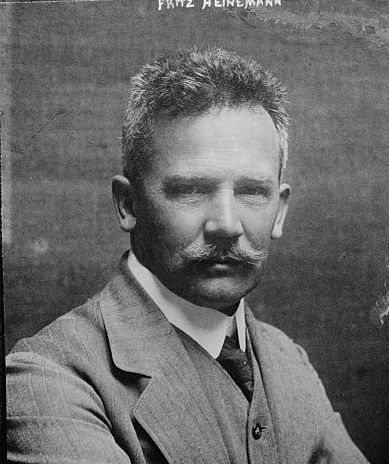
Fritz Heinemann was a German sculptor. Heinemann belonged to those artists who set themselves apart from the prevailing New Baroque of the time by Reinhold Begas and his students with a tectonic formal language in the sense of Adolf von Hildebrand. Some figures are close to the works of Auguste Rodin. His work covers almost the entire sculptural spectrum: monuments, gravestones, genre figures, busts and small bronzes.

François Auguste René Rodin was a French sculptor, generally considered the founder of modern sculpture. He was schooled traditionally and took a craftsman-like approach to his work. Rodin possessed a unique ability to model a complex, turbulent, and deeply pocketed surface in clay. He is known for such sculptures as The Thinker, Monument to Balzac, The Kiss, The Burghers of Calais, and The Gates of Hell.
Many of Rodin's most notable sculptures were criticized, as they clashed with predominant figurative sculpture traditions in which works were decorative, formulaic, or highly thematic. Rodin's most original work departed from traditional themes of mythology and allegory. He modeled the human body with naturalism, and his sculptures celebrate individual character and physicality. Although Rodin was sensitive to the controversy surrounding his work, he refused to change his style, and his continued output brought increasing favor from the government and the artistic community.
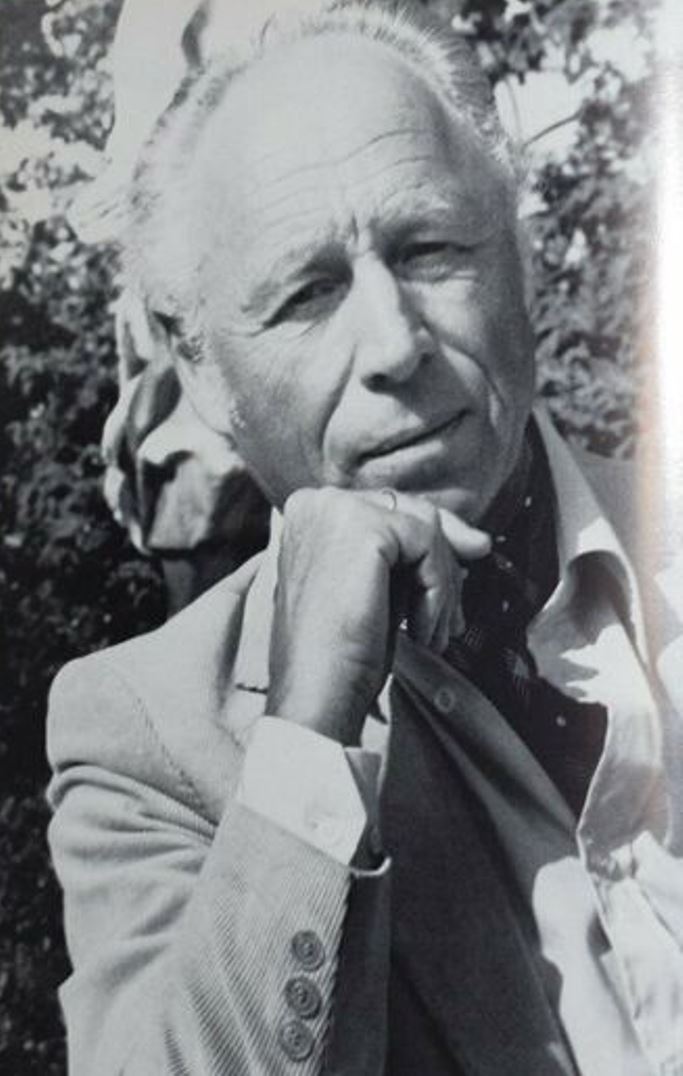
Erwin A. Schinzel was a Czech sculptor who lived and worked in Germany. He is deservedly called a classic of modern sculpture.
Schinzel studied at the Academy of Fine Arts in Berlin and was a freelance artist from 1945. He also worked as a professor at the International Academy in Bologna and at the International Academy of Fine Arts in Altenberg.
During his long life, Schinzel created hundreds of sculptures and demonstrated his skills in almost every genre. His work includes interior and fountain sculptures as well as outdoor sculptures, including many very realistic depictions of animals.
Schinzel's award-winning works are represented in numerous public and private art collections and have been exhibited worldwide in solo and group exhibitions.
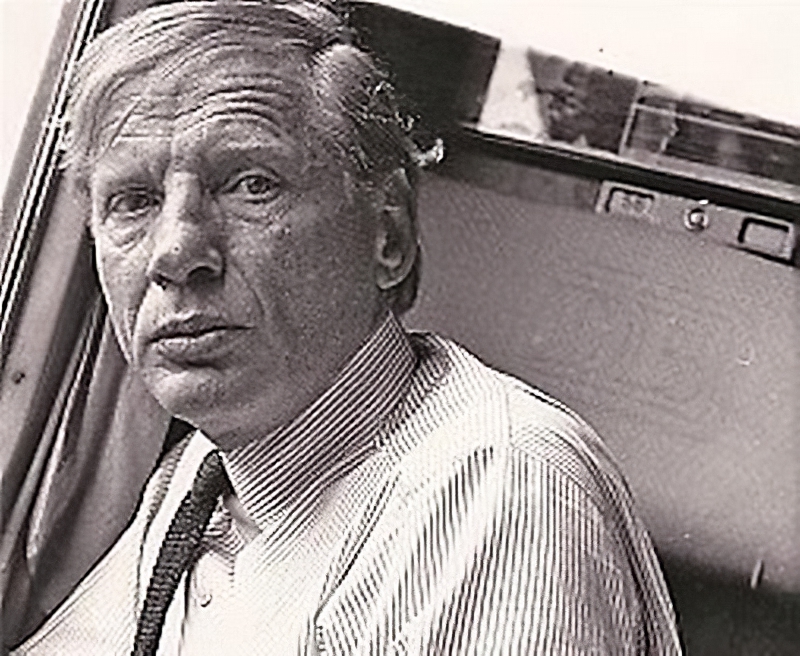
Rudolf Hausner was an Austrian painter, draughtsman, printmaker and sculptor. Hausner has been described as a "psychic realist" and "the first psychoanalytical painter".
A characteristic of his painting technique is the use of translucent ("glazing") resin oil paints in more than ten layers on top of each other over underpainting of acrylic paints, which gives the paint a special luminous depth. He also developed methods to create flawless transitions in pure oil painting without the use of an airbrush.
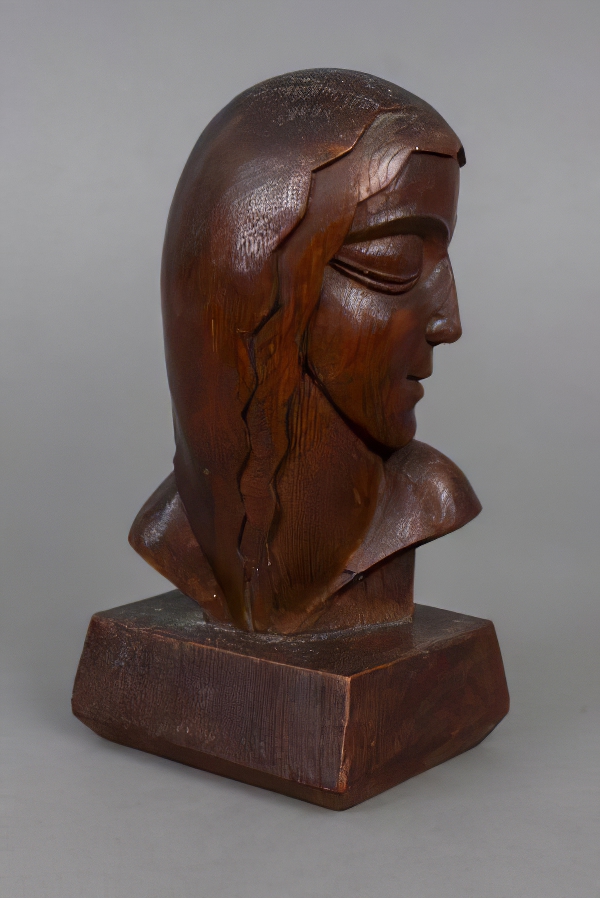
Karl Opfermann, a German sculptor and graphic artist born in 1891 in Rødding (now Denmark), carved a niche for himself in the realms of art and culture. His initial training as an ornament creator led him to the influential circles of Hamburg and Berlin, where he honed his artistic skills under the guidance of Heinz Wedding, Fritz Heit, and Richard Luksch. Opfermann's artistic journey was deeply intertwined with notable groups like the "Hamburgische Sezession" and the "Novembergruppe" in Berlin, where he played a pivotal role in shaping the local sculptural landscape from 1919 to 1933.
Tragically, Karl Opfermann's works became a target during the "Entartete Kunst" (Degenerate Art) action in 1937 by the Nazis, leading to their removal and destruction from German museums. A significant portion of his oeuvre was further lost in a bombing in 1943, which destroyed his studio in Hamburg. Despite these challenges, Opfermann's legacy persists, with efforts to reconstruct his life and works focusing on the years before 1943, the period before the destruction wrought by the Nazis and World War II.
Karl Opfermann's artistic expression was rooted in German Expressionism, a movement born out of resistance and reaction, emphasizing emotion and individual experience. His works, spanning various mediums including wood, stone, and ceramics, reflect a profound emotional depth and a unique exploration of human form and expression.
For collectors and experts in art and antiques, Karl Opfermann's work offers a compelling glimpse into the turbulent yet artistically rich period of early 20th-century Germany. His sculptures and graphic art, held in various collections throughout Germany, including Hamburg and Flensburg, stand as a testament to his enduring impact on German Expressionism.
To delve deeper into the world of Karl Opfermann and stay informed about new sales or auction events related to his work, consider signing up for updates. This subscription is an opportunity to explore and appreciate the profound legacy of this influential artist.
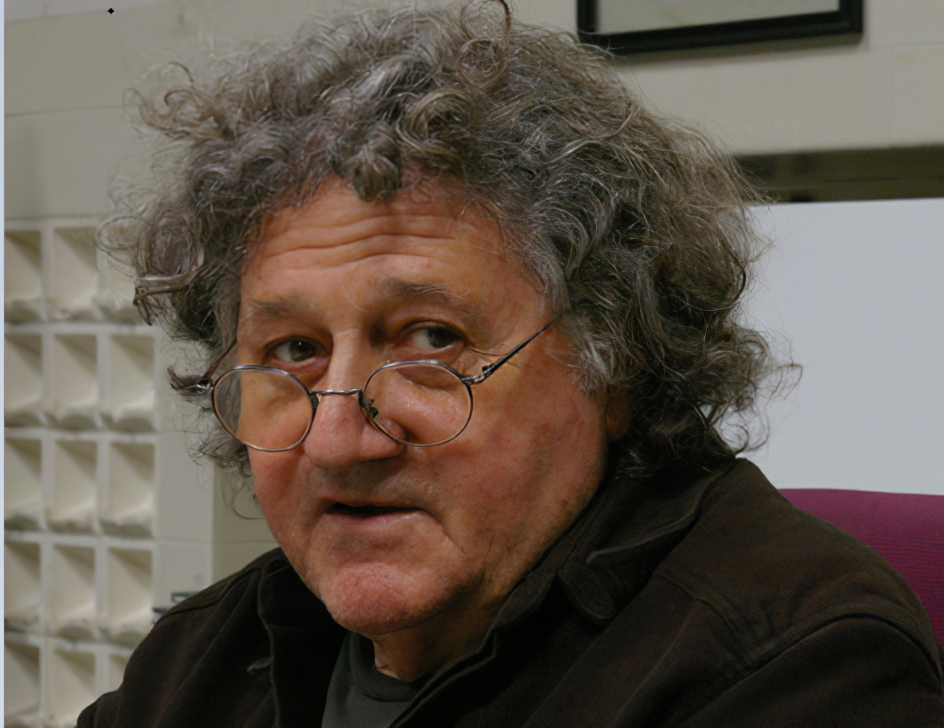
Bruno Bruni senior is an Italian lithographer, graphic artist, painter and sculptor. He became commercially successful in the 1970s. In 1977, he won the International Senefeld award for Lithography. He has since become one of the most successful Italian artists in Germany and one of Germany's best known lithographers.

Horst Antes was a German painter, graphic artist and sculptor, a pioneer of the new figurative painting in Germany.
After studying at the Karlsruhe Academy of Fine Arts from 1957 to 1959, Antes taught there himself and later became a professor there.
Antes became known for the Kopffüßler (head-foot) image, which has been a recurring theme in his paintings, sculptures and graphic works since the early 1960s. Antes' work is represented in several major collections in Berlin, Hamburg, Cologne and elsewhere in Germany.
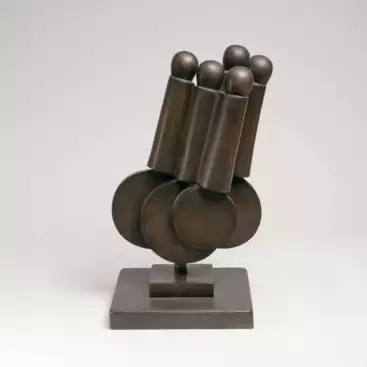
Georg Engst was a German sculptor.
Engst preferred to work in wood, stone and bronze, but also in aluminium, concrete and glass. Much of his artistic work from the mid-1950s onwards is abstract-geometric in character, initially in the form of inlaid panels and inlaid walls made of wood, for example for a commission for the conference room of the Regional Church Office in Hanover in 1957.

Georg Engst was a German sculptor.
Engst preferred to work in wood, stone and bronze, but also in aluminium, concrete and glass. Much of his artistic work from the mid-1950s onwards is abstract-geometric in character, initially in the form of inlaid panels and inlaid walls made of wood, for example for a commission for the conference room of the Regional Church Office in Hanover in 1957.
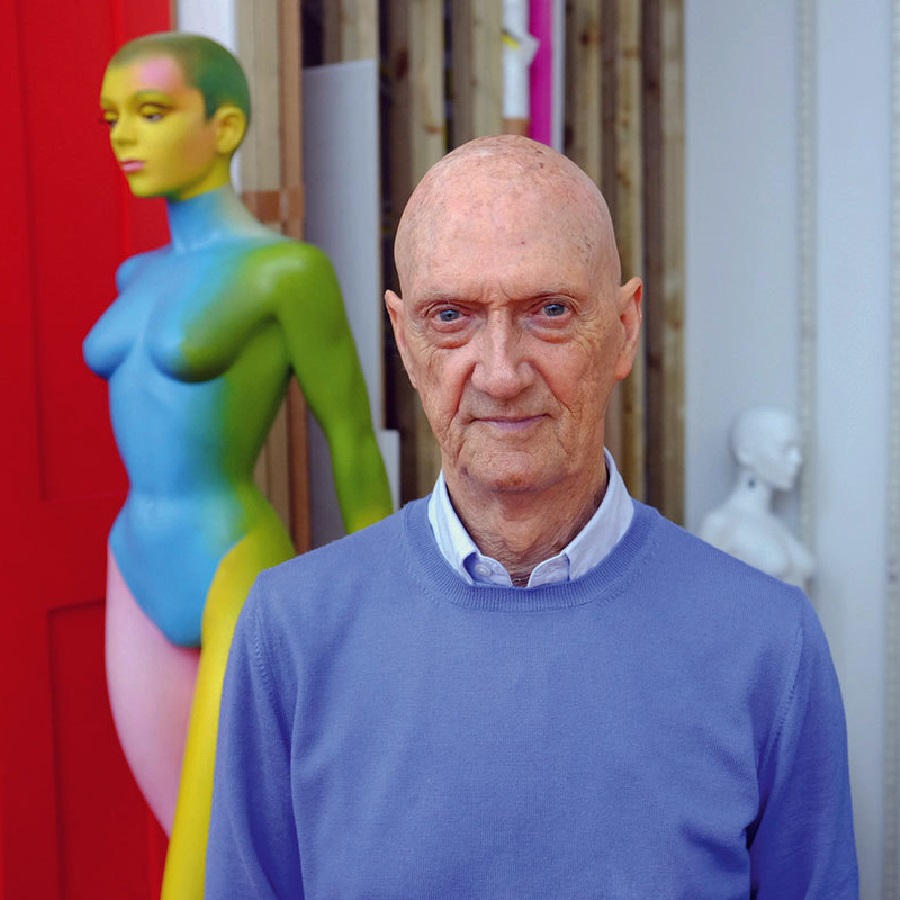
Allen Jones is a British pop artist and a senior member of the Royal Academy of Arts. He is known for his paintings, sculptures and lithographs on the theme of human sexuality. He was awarded the Prix des Jeunes Artistes at the 1963 Paris Biennale.
Allen Jones' most famous work is "Hat Stand, Table and Chair," created from "fetish" fiberglass mannequins.
